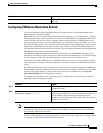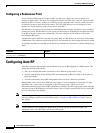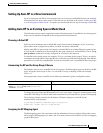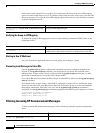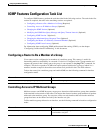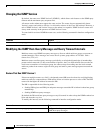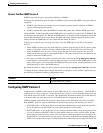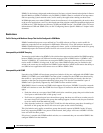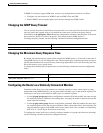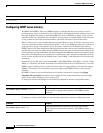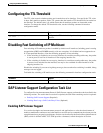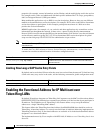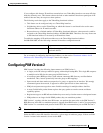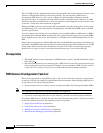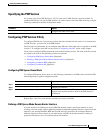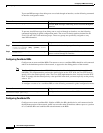
Configuring IP Multicast Routing
IGMP Features Configuration Task List
IPC-413
Cisco IOS IP Configuration Guide
If IGMPv3 is needed to support SSM, then you have two configuration alternatives as follows:
• Configure only the interface for IGMPv2 and use IGMP v3lite and URD.
• Enable IGMPv3 and accept the higher leave latencies through the CGMP switch.
Changing the IGMP Query Timeout
You can specify the period of time before the router takes over as the querier for the interface, after the
previous querier has stopped doing so. By default, the router waits two times the query interval
controlled by the ip igmp query-interval interface configuration command. After that time, if the router
has received no queries, it becomes the querier. This feature requires IGMP Version 2.
To change the query timeout, use the following command in interface configuration mode:
Changing the Maximum Query Response Time
By default, the maximum query response time advertised in IGMP queries is 10 seconds. If the router is
using IGMP Version 2, you can change this value. The maximum query response time allows a router to
quickly detect that there are no more directly connected group members on a LAN. Decreasing the value
allows the router to prune groups faster.
To change the maximum query response time, use the following command in interface configuration
mode:
Configuring the Router as a Statically Connected Member
Sometimes either there is no group member on a network segment or a host cannot report its group
membership using IGMP. However, you may want multicast traffic to go to that network segment. The
following are two ways to pull multicast traffic down to a network segment:
• Use the ip igmp join-group interface configuration command. With this method, the router accepts
the multicast packets in addition to forwarding them. Accepting the multicast packets prevents the
router from fast switching.
• Use the ip igmp static-group interface configuration command. With this method, the router does
not accept the packets itself, but only forwards them. Hence, this method allows fast switching. The
outgoing interface appears in the IGMP cache, but the router itself is not a member, as evidenced by
lack of an “L” (local) flag in the multicast route entry.
To configure the router itself to be a statically connected member of a group (and allow fast switching),
use the following command in interface configuration mode:
Command Purpose
Router(config-if)# ip igmp query-timeout seconds
Sets the IGMP query timeout.
Command Purpose
Router(config-if)# ip igmp
query-max-response-time seconds
Sets the maximum query response time advertised in IGMP queries.



